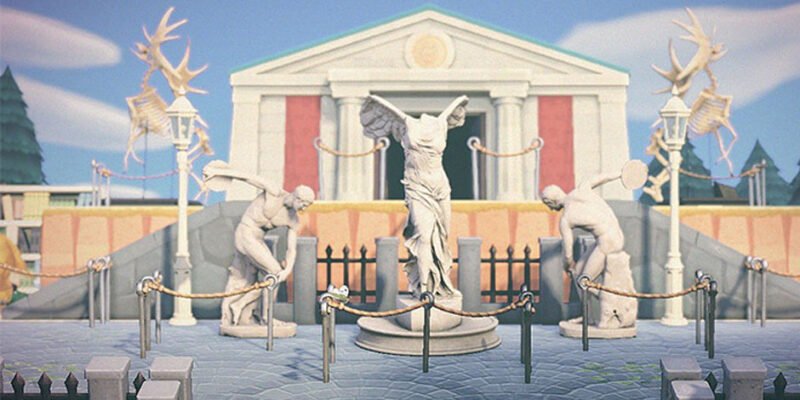Unraveling the Mysteries of the Valiant Statue in ACNH
Do you find yourself navigating the charming world of Animal Crossing: New Horizons in pursuit of the elusive valiant statue? If so, you’re likely on a quest to enhance your museum collection and bring joy to the heart of Blathers. Join us as we delve into the realm of art authenticity, unveiling the secrets of real and fake statues.
Navigating the World of Art
Real vs. Fake: A Comparative Analysis
Within the realm of Animal Crossing: New Horizons, discerning fake statues from their authentic counterparts is a puzzle well worth solving. Interestingly, identifying counterfeit statues is often easier than distinguishing fake paintings. While you might not be an art connoisseur, it’s highly improbable that ancient Greek statues would sport wristwatches. Crafting a watch face for a fake statue might seem rather excessive, but such intricacies are part of Redd the Fox’s intriguing deception.
Exploring the Realm of Statues
After delving into the intricacies of paintings, it’s time to explore the fascinating world of statues.
The Certainties
Certain statues are consistently genuine. If you encounter these, seize the opportunity to add them to your collection:
- Great Statue
- Familiar Statue
For these, authenticity is a given. In cases where an image accompanies the description, rest assured that it reflects the true nature of the statue.
Motherly Statue—Capitoline Wolf
This statue depicts the legendary tale of Rome’s foundation: the nurturing she-wolf and the abandoned infants, Romulus and Remus. However, a twist of fate awaits Remus, revealing the city’s eventual name. The fake version features the wolf with its tongue hanging out—opt for authenticity by selecting the one without the protruding tongue.
Robust Statue—Discobolus
Easily distinguishable, the genuine statue of the Graecian athlete discus thrower lacks a wristwatch. Should you encounter one wearing such an accessory, it’s undoubtedly a fake.
Informative Statue—The Rosetta Stone
The Rosetta Stone, an invaluable artifact connecting ancient civilizations through hieroglyphics, demotic script, and ancient Greek text. Identifying a fake is relatively simple: the true stone is black, while its counterfeit counterpart boasts a garish blue hue.
Mystic Statue—Bust of Nefertiti by Thutmose
Conflicting information abounds, but observing the real artifact clarifies matters. An earring on the Bust of Nefertiti signifies a fake. The genuine piece lacks earrings and even a complete set of ears.
Rock Head Statue—Olmec Head
Focus on the mouth: a solemn expression denotes authenticity, while a subtle smile signifies a fake. Though the smile is minimal, it’s a telltale sign—refrain from purchasing the smiling version.
Gallant Statue: David by Michelangelo
Spotting the real David is a breeze. The genuine version portrays the iconic figure preparing for battle, unburdened by a book. In contrast, the fake statue sports a book under its arm.
Tremendous Statue—Houmuwu Ding
Remarkably, the real Houmuwu Ding is the largest surviving piece of ancient bronzeware globally. The fake version features a lid, whereas the authentic one remains lidless.
Ancient Statue—Shakoki Dogu
This intriguing statue boasts captivating aesthetics. A key distinction lies in the antennae: a genuine statue lacks the protruding antennae found on the fake version.
Beautiful Statue—Venus De Milo by Alexandros of Antioch
The renowned Venus De Milo is distinguishable by a simple criterion: the fake version dons a necklace, while the authentic piece does not.
Valiant Statue: Nike of Samothrace
Here lies a challenge—identifying the valiant statue’s authenticity hinges on leg positioning. The genuine version showcases Nike’s right leg forward, while the fake counterpart presents the left leg forward. Opt for the statue with the right leg positioned forward to acquire the true gem.
Concluding Insights
As you traverse the whimsical world of Animal Crossing: New Horizons, remember that art authentication is a puzzle waiting to be solved. By unraveling the nuances of statues, you’re not only enhancing your virtual museum but also embracing the art of deception detection.
















Comments